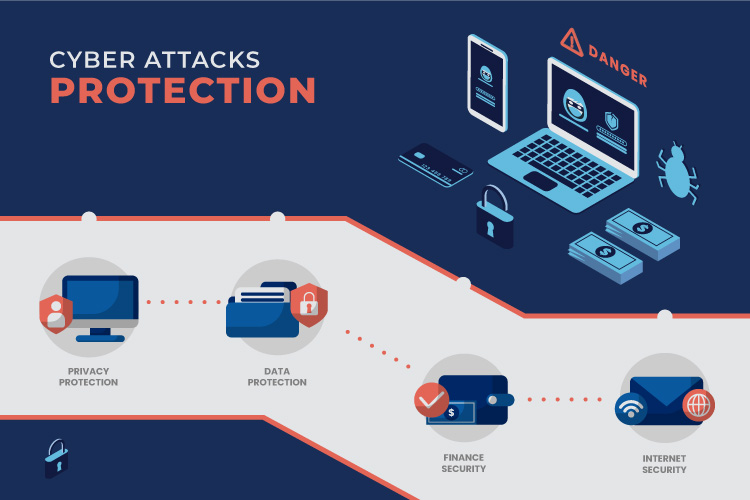Cyber threats are becoming more sophisticated every year, and 2024 is no exception. As businesses rely more on digital technology, the potential for cyber attacks increases. It’s crucial to stay informed about the latest threats to protect your operations and sensitive data. Understanding the evolving threat landscape helps us prepare and defend better against these digital dangers.
Cybercriminals are constantly finding new ways to exploit vulnerabilities in systems. From phishing scams to ransomware attacks, the tactics used by hackers are becoming more advanced. They target businesses of all sizes, looking for weak points to steal data, disrupt services, or demand ransoms. These attacks can lead to significant financial losses and damage your reputation.
Knowing what threats are out there and how they can affect your business is the first step in creating a robust cybersecurity strategy. By staying informed and proactive, we can better secure our digital assets and reduce the risk of falling victim to these ever-evolving cyber threats. Let’s dive deeper into the current cyber threat trends, the impact of these threats on businesses, and effective strategies to mitigate them.
Current Cyber Threat Trends in 2024
As we delve into 2024, cyber threats are more advanced and varied than ever. One major trend we see is the rise of ransomware attacks. These attacks encrypt a business’s data, making it inaccessible until a ransom is paid. Attackers are targeting larger organizations, demanding higher ransoms, and even threatening to release sensitive data if payments are not made.
Phishing attacks also continue to be a significant threat. Cybercriminals create convincing fake emails and websites to trick employees into revealing personal information, such as passwords or credit card numbers. These attacks are getting more sophisticated, often mimicking trusted sources to reduce suspicion.
We’re also seeing an increase in supply chain attacks. In these cases, hackers target less secure elements within a supply chain to gain access to larger networks. By exploiting these weak links, they can penetrate robust systems that are otherwise hard to breach. Staying updated on these trends helps us better prepare for and defend against potential attacks.
The Impact of Cyber Threats on Businesses
Cyber threats can have devastating effects on businesses. One of the most immediate impacts is the financial cost. Recovering from a cyber attack often involves significant expenses, such as paying for data recovery, legal fees, and any ransom demanded by attackers. In some cases, businesses may also face fines for failing to protect customer data.
Another major impact is the loss of trust. When a business experiences a data breach, it can damage its reputation significantly. Customers may feel their personal information is not safe and could choose to take their business elsewhere. This trust is hard to rebuild and can lead to long-term losses.
Cyber attacks can also result in operational disruptions. Systems might be shut down, data can be lost, and normal business activities can be halted for days or even weeks. These disruptions can affect productivity and lead to missed opportunities and revenue loss. Understanding the full impact of cyber threats highlights the need for robust cybersecurity measures to protect our business.
Common Types of Cyber Attacks to Watch Out For
There are several common types of cyber attacks that we need to be aware of to protect our business effectively. One prevalent type is phishing. This involves attackers sending fraudulent messages to trick recipients into revealing sensitive information. These emails often appear to be from trusted sources, making them difficult to detect.
Another common attack is the Denial-of-Service (DoS) attack. Hackers flood a network or server with traffic to overwhelm it, causing it to crash. This can disrupt business operations and prevent legitimate users from accessing services. A more advanced form of this is the Distributed Denial-of-Service (DDoS) attack, where multiple systems are used to target a single system, amplifying the attack’s impact.
Malware is another significant threat. This malicious software can damage or disable computers, steal data, and spy on user activities. Types of malware include viruses, worms, and Trojan horses. Recognizing these common attack methods helps us stay vigilant and better prepared to defend against them.
Effective Strategies to Mitigate Cyber Threats
There are several strategies we can implement to mitigate cyber threats. First, regularly updating our software and systems can help patch security vulnerabilities that hackers might exploit. Keeping everything up to date is a simple but effective way to enhance security.
Implementing strong password policies is also crucial. Encourage employees to use unique and complex passwords and change them regularly. Using password managers can help manage these passwords securely. Additionally, employing multi-factor authentication (MFA) adds an extra layer of security by requiring a second form of verification beyond just a password.
Another key strategy is to provide cybersecurity training for employees. Educating staff about the latest threats, recognizing suspicious activities, and following best practices can significantly reduce the risk of human error. Conducting regular security audits can also help identify and address potential vulnerabilities in our system.
Conclusion
Understanding and addressing the cybersecurity threat landscape in 2024 is vital for protecting our business. By staying informed about current trends, recognizing the potential impacts of attacks, and knowing the common types of threats, we can better prepare ourselves. Implementing effective mitigation strategies, such as regular updates, strong password policies, and thorough employee training, can significantly enhance our cybersecurity posture.
As you navigate these challenges, consider partnering with The Saturn Partners for comprehensive cybersecurity services tailored to your needs. Our expertise can help you implement robust security measures to protect your business from evolving threats. Contact us today to learn more about how we can support your cybersecurity efforts.

